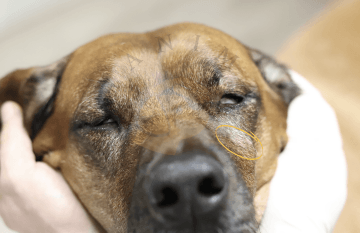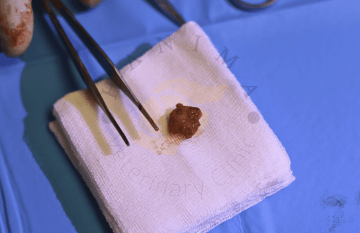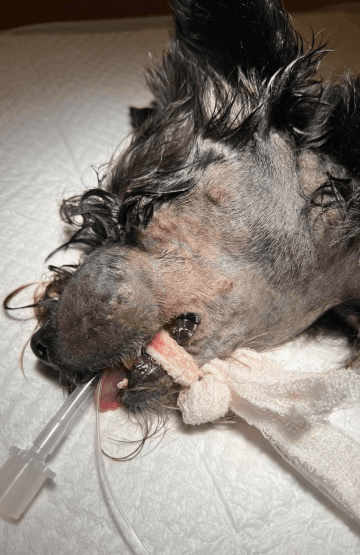Tumors in the orofacial region
Professional Dental Consultation
The first step before any dental procedure with us is always a professional dental consultation, also known as a dental examination. Without this, we are unable to determine the type, extent, or cost of the necessary dental or dental surgical procedure. We strive to approach our clients transparently to ensure that it is entirely clear what needs to be done and how much it will cost.
The price for a professional dental consultation is 940 CZK.
What is oral cancer and tumor?
Cancer, or more precisely tumor disease, is a diverse group of diseases, the common feature of which is the uncontrolled growth of some population of cells, although under normal circumstances the cells are able to detect and repair their mutation or destroy themselves by apoptosis. Cancer cells grow faster than normal cells, are uncoordinated, and virtually every cell in the body has the potential to become cancerous.
Tumors can be either benign (non-malignant) or malignant (malignant). Benign tumors grow locally and uniformly, while malignant tumors grow infiltratively into the surrounding area. One of the characteristic features of a malignant tumor is its ability to metastasize, i.e. it is able to spread throughout the body and establish distant foci (metastases).
Cancer can be classified on the basis of the tissue it affects (e.g. cancer of the skin, muscle, individual organs, etc.) or on the basis of localization on the body - here we will specifically deal with cancer in the face area, i.e. tumors in the orofacial area.
Thus, an oral tumor is an abnormal growth and unregulated replication of cells that occurs in the mouth. An animal's mouth is made up of several different types of cells; for example, there are epithelial (or skin) cells, bone cells, fibrotic cells, and others, all of which can become cancerous.
What are the most common benign tumors?
peripheral odontogenic fibroma, fibromatous and ossifying epulis
acanthomatous ameloblastoma
odontoma
papilloma
What are the most common malignant (malignant) tumors?
fibrosarcoma
osteosarcoma
melanoma
squamous cell carcinoma
What are the clinical symptoms of an oral cavity tumor?
Oral tumors come in many forms, and clinical symptoms will depend on the location of the tumor, the type of tumor, the size of the tumor, and the way the tumor is growing. For example, melanomas (the most common oral tumor in dogs) can be pigmented or non-pigmented and can have a nodular or cauliflower appearance. These tumors can appear as swellings on the gums around the teeth or on the hard or soft palate. They often ulcerate and necrotize (disintegrate), bleed and are often also infected. These tumors may appear small from the outside, but many times they spread deeper into the tissues with bone infiltration. Mouth soreness is usually the main symptom of tumors that have spread to the bone. Other symptoms include bad breath (halitosis), drooling, gasping for breath, loose or even missing teeth, decreased appetite, difficulty swallowing, painful handling of the mouth, facial swelling, and swollen lymph nodes.
How is oral cavity cancer diagnosed?
Accurate diagnosis of oral cavity tumors requires microscopic examination of tumor tissue by a histopathologist. In practice, two sampling techniques are used.
Fine needle aspiration biopsy (FNA) - involves taking a sample using a fine needle and syringe, then the sample is placed on a microscopic slide. The advantage of this method is non-invasiveness, the sample can often be collected without the need for sedation. On the contrary, the disadvantage is not too much evidence due to the small volume of material.
An excisional biopsy is the surgical removal of part of a tumor. If there is an option, we always prefer that option. The advantage is not only a more accurate diagnosis, but it can also indicate how the tumor is likely to behave (how aggressive it is). On the other hand, the disadvantage is the necessity of sedation and the higher invasiveness of the sampling method.
If the local lymph nodes are enlarged or abnormally changed, further sampling is done using a fine-needle aspiration biopsy to see if there is also spread in the lymph nodes.
How does the tumor usually behave?
Benign tumors of the oral cavity usually grow slowly and locally, while malignant tumors grow rapidly and infiltrate (invade) adjacent tissues. Some tumors may be local but may have aggressive growth (so-called locally aggressive tumors), which means that it will attack closely related tissues and structures such as tooth roots and bone. Malignant and very aggressive tumors usually have the ability to metastasize (spread elsewhere) to local lymph nodes, lungs and abdominal organs. Depending on the type of tumor, the risk of metastasis can be as high as 80%. In the case of a malignant (malignant) tumor of the oral cavity, full staging (looking for potential spread to other places in the body) is strongly recommended. This may include blood tests, urinalysis, X-rays of the lungs and possibly an abdominal ultrasound.
What are the treatment options for oral cavity tumors?
Surgical removal is the most common recommendation for the treatment of oral cavity tumors. If local lymph nodes are affected, they are removed at the same time as the tumor. If the tumor has invaded the bone, which is the case with all aggressive malignant tumors and locally aggressive tumors, it is also necessary to remove the bone near the tumor (part of the upper or lower jaw). Although this type of surgery sounds terrifying to you, many of these tumors are painful and surgical removal provides relief for your pet. In addition, if the functionality of the mouth is preserved, the animal practically does not care about its aesthetics and appearance. After surgery, tissues are sent to confirm complete excision (tumor removal). If the malignancy has not been completely removed or technically could not be completely removed, a second operation or subsequent treatment with radiation therapy may be required. Radiation therapy may also be considered as a primary treatment option if surgery is not possible. In cases of metastases, chemotherapy can also be started as a treatment option for your pet.





Subcutaneous mastocytoma





